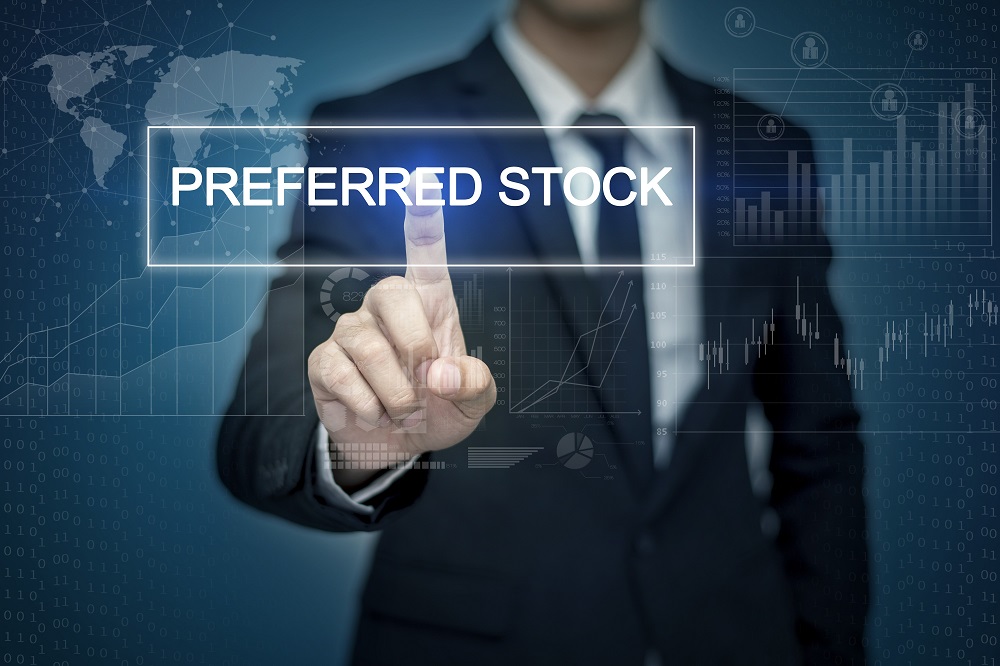Preferred stocks catch the eyes of investors who are looking for income because their dividend yields tend to be high and fairly secure. However, there are trade-offs that come with the higher yields.
A preferred stock is like a combination of a stock and a bond. Technically, it is a stock, but it often trades more like a bond.
Here’s how it reflects properties of both stocks and bonds.
Like a Stock
- Preferred stocks trade on the New York Stock Exchange and the Nasdaq.
- Prices can change due to supply, demand and company fundamentals.
- Preferred stocks pay dividends.
Like a Bond
- Payouts to shareholders are fixed and will not change.
- Preferred stocks can be callable and/or have maturity dates.
- They have priority over common stock when it comes to paying investors and managing a bankruptcy.
- Preferred stocks have a par value.
- Preferred stocks are subject to interest rate risk.
While preferred stocks trade on a stock exchange, and while prices move according to supply and demand, they also have a par value: Most preferred stocks are issued at $25 per share.
While they can and do trade above and below $25, they usually won’t trade more than a few dollars above $25. That’s because preferreds are usually bought for their yield. If the price goes too high, the yield will be too low to be attractive.
For example, a preferred stock with a 6% yield at $25 pays an annual dividend of $1.50. If the stock price rises to $50, that $1.50 dividend now represents a 3% yield.
Some preferred stocks can be called away from investors at a specific date, usually at par value or slightly higher. In other words, you could buy a preferred stock today, and if it has a callable date of January 1, 2020, you’d know that at any time on or after the callable date that your stock could be bought from you for $25. Knowing this, you may not be willing to pay $27 for the stock.
Like bonds, preferred stocks also have interest rate risk because the income you receive is fixed. Think of it this way: You may be willing to pay $25 for a preferred stock with a 6% yield when a risk-free 10-year Treasury yields 2.6%. But would you be willing to pay the same $25 if you could get 4% for a risk-free investment? Probably not.
You’d want a higher yield to make up for the higher risk. In order for that preferred stock that yields 6% to be more attractive to investors in a higher interest rate environment, the stock price would need to fall to increase the yield. Remember, the payment is never going to change, so the stock price has to adjust to change the yield.
Lastly, if the company runs into trouble, it must pay preferred shareholders their dividends before paying common shareholders. In many cases, if the company missed any dividend payments, preferred shareholders have to receive all of their missed dividends before payments to common shareholders can start again.
And if there is a bankruptcy, preferred shareholders come after bondholders but before common stockholders in order of who receives funds.
Many of the companies that offer preferred stocks are financials and real estate investment trusts – so even if you love preferreds, be careful about not getting too overweight in the sector.
If you want exposure to preferred stocks but don’t feel comfortable selecting the stocks yourself, you can always choose an exchange-traded fund (ETF).
For example, Virtus InfraCap U.S. Preferred Stock ETF (NYSE: PFFA) yields 9.5% and pays dividends monthly.
Preferred stocks can help investors get more income and boost yield in their portfolios – but be sure understand the potential risks and rewards of owning them.
Good investing,
Marc
